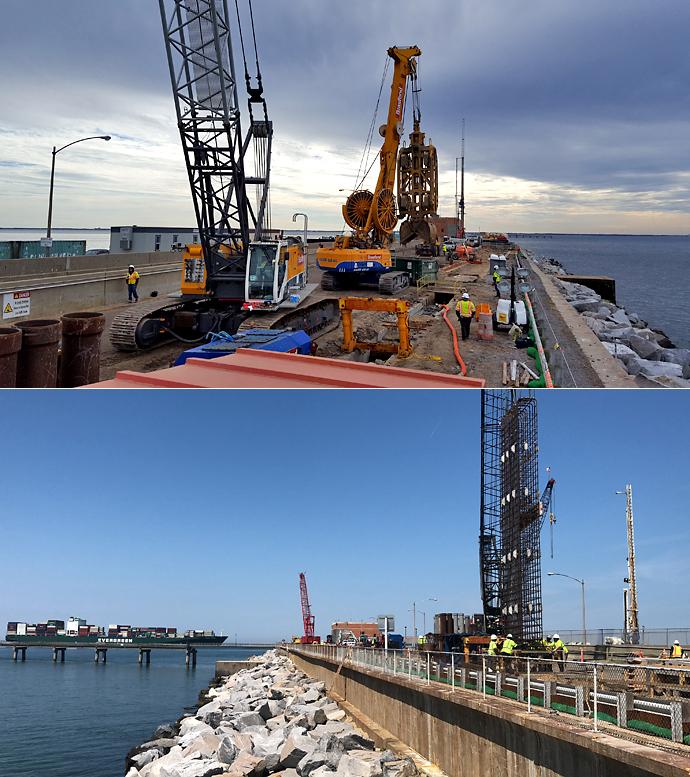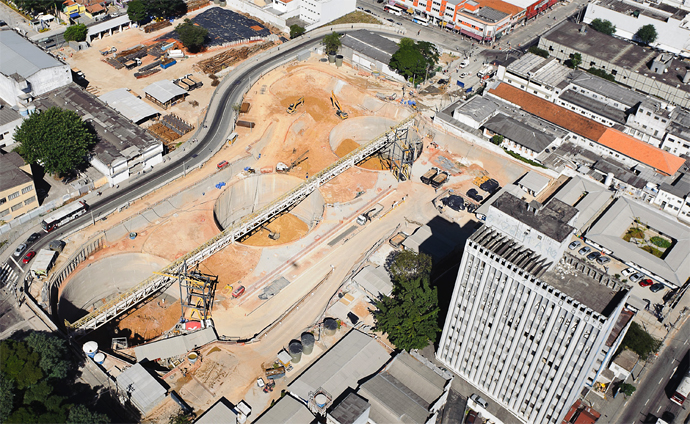 Large Diameter Drilled Shafts
Large Diameter Drilled Shafts Diaphragm wall
Diaphragm wall Hydromill
Hydromill Diaphragm Pile (Barrette)
Diaphragm Pile (Barrette) CFA Piles
CFA Piles Root Piles
Root Piles Tiebacks
Tiebacks Jet Grouting
Jet Grouting Soil Treatment
Soil Treatment Cutter Soil Mixing
Cutter Soil Mixing Soil Improvement
Soil Improvement Environmental Geotechnics
Environmental Geotechnics Large Diameter Drilled Shafts
Large Diameter Drilled Shafts Driving of pre-cast piles
Driving of pre-cast piles Sheet Pile Driving
Sheet Pile Driving  Installation of pipes
Installation of pipes  Foundation for platforms
Foundation for platforms  Deep Shafts (Blind shafts)
Deep Shafts (Blind shafts) Pipeline Insertion System
Pipeline Insertion System
Special Foundations
Offshore Foundations
Oil & Gas
New Technologies
 Diaphragm wall
Diaphragm wall
A diaphragm wall is a vertical underground wall that varies in depth and thickness, consisting of panels, either alternating or continuous, that are able to absorb axial loads, horizontal thrusts, and bending moments.
The wall may have a static or hydraulic cutoff function, and can be made of plain or reinforced concrete, pre-cast or plastic, according to its intended scope.


BRASFOND PERFORMS REAL TIME MONITORING OF THE VERTICALITY OF THE EXCAVATED DIAPHRAGM WALL PANELS
Initially used in the construction of cutoffs for dams to intercept seepage flows, a diaphragm wall is often built as a solution for difficult projects:
- Retaining walls for excavations in underground construction areas , even when in the vicinity of existing buildings;
- Construction of underground galleries and subways;
- Polygonal shape for the construction of underground reservoirs and shafts;
- Functioning as a deep foundations element;
- Containment structures to prevent landslides;
- To encapsulate contaminated areas;
- Protection of bridge foundations;
- Port facilities (quays).
Besides the above, one of their most widespread applications is the channeling of rivers and streams. With safety, economy, speed and minor disturbance of urban traffic, floods can be prevented by widening a channel, thus lowering the river bed and consequently increasing its flow.
Diaphragm Wall with Hydromill – Vila Sônia Station - Linha 4 Amarela - São Paulo Subway
Types of Diaphragm wall
The diaphragm walls can be performed in three different ways, applied as a result of the needs of each project:
- Cast 'in situ'
- Pre-cast
- Plastic (cement-bentonite or "coulis" )

Learn more about the Diaphragm wall
Specifications, construction sequences, differences between each type of diaphragm wall.

